|
Dos Palmas Preserve in
Riverside County, just a bit inland from the northeast side of the
Salton Sea, is a major experience. Several native palm oases and an
extensive freshwater marsh are now preserved here in an unworldly
setting of light gray sand and scrawny mesquite. Today there are
thousands of palms, but in the 1800s only two large palms ("dos
palmas") framed the primary spring. Shifting tectonic plates are said
to have created the improbable springs here in otherwise 'lifeless'
alkali flats. We visited here on 27 May 2007 with Peter Siminski
(above) as our guide. One must hike about a mile from the parking area
to the oases.
|
|
Among the impressive things about this oasis is
the incredible abundance and variety of Odonata. Rambur's
Forktail is a common damselfly, and the young females (right)
glow intensely in the desert sun. Mid-day temperatures routinely exceed
100°F here. It was only 98° when we visited, but each of us
sucked down multiple bottles of water. Be advised!
The main oasis is at the base of the Orocopia Mts
(below left). We were fortunate to have Peter with us as there are a
maze of old roads and trails through the sets of fish-farming ponds
dated back decades (below right; Rita is taking video). Today the
preserve is cooperatively managed by BLM, Calif. Dept. of Parks, Calif.
Dept. Fish & Game, and the Center for Natural Lands Management.
|
|
|
|
|
|
Perhaps the dos 'totem' species for Dos
Palmas are the two pennants whose ranges encompass southeastern
California. During our visit, Red-tailed Pennant
(first photo below) was present in middling numbers, with males leaning
into the wind out over the ponds, like a Tibetan prayer-flag pennant,
particularly well named. Marl Pennant (second photo
below) was present in abundance. A minimum estimate was "over 100" with
many of both sexes and some tandem ovipositing watched at the various
pools. The one I've chosen to feature was 'obelisking' at mid-day in
the hot sun.
|
|
|
|
Rita says the Marl Pennant shot is
okay, but that it doesn't show the nice 'mini-saddlebags' appearance to
the wings. So, in deference to such request, here are two more Marl
Pennant photos that show such a pattern: male in flight (below
left) and female (below right).
|
|
|
|
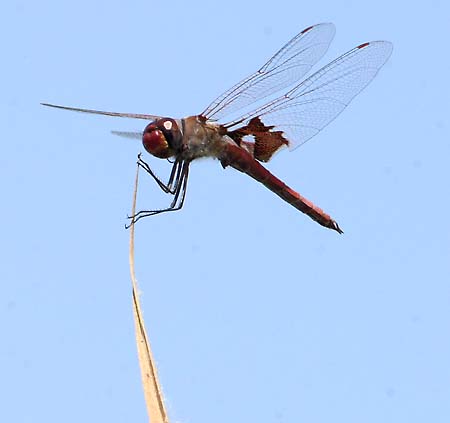 We were pleased to see both saddlebags in
fair numbers. They are usually seen only in flight, so it was a lucky
break to see this nice male Red Saddlebags (right)
perched up on a tiny spike. Our complete list of odes: We were pleased to see both saddlebags in
fair numbers. They are usually seen only in flight, so it was a lucky
break to see this nice male Red Saddlebags (right)
perched up on a tiny spike. Our complete list of odes:
- American Rubyspot 2
- California/Aztec Dancer 2 fem
- Blue-ringed Dancer 25
- Rambur's Forktail 15
- Desert Forktail 2 fem
- Citrine Forktail 2 fem
- C. Green Darner 3
- White-belted Ringtail 1 fem
- Red-tailed Pennant 35
- Marl Pennant 100 minimum
- Western Pondhawk ~200
- Blue Dasher 400
- Flame Skimmer 1 male
- Comanche Skimmer 12
- Bleached Skimmer 3 male
- Widow Skimmer 15
- Wandering Glider 10
- Black Saddlebags 30
- Red Saddlebags 10
|
|
Here's one of the Wandering Gliders in
flight:
|
| Certainly the southern skimmers were major
highlights: Bleached Skimmer (male, right) and Comanche
Skimmer (female, below). Both were impressive dragons.
Bleached Skimmer is almost ghost-like in the way it appears and then
disappears into the salt brush, but once we discovered its preferred
perch, it was almost tame. |
 |
|
|
|
|
Yes, Dos Palmas Preserve is a very special place.
Not only are the masses of odonates impressive, but there are Desert
Pupfish, a variety of herps (native & introduced), and a wide
selection of birds in the middle of the desert. This is a Common
Moorhen (right).
We'll conclude this page with a couple of very
small damsels, specialties of the desert. The first one below is
exceptionally tiny: an adult female Citrine Forktail.
Below that is a female Desert Forktail, distinguished
from Rambur's by a number of features, including the pale thorax, the
'torpedo-shaped' pattern atop much of the abdominal segments, and the
all-pale top to segment #8.
|
|
|
|
|
|
|
|
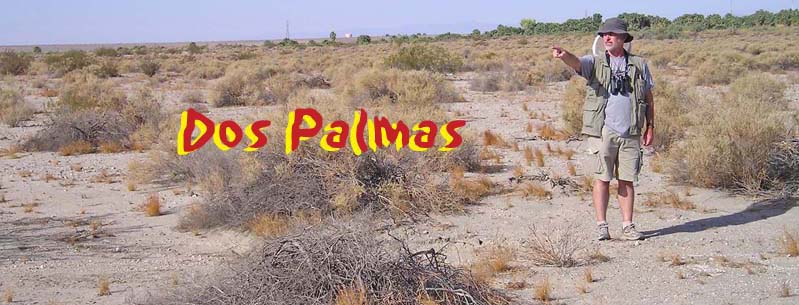
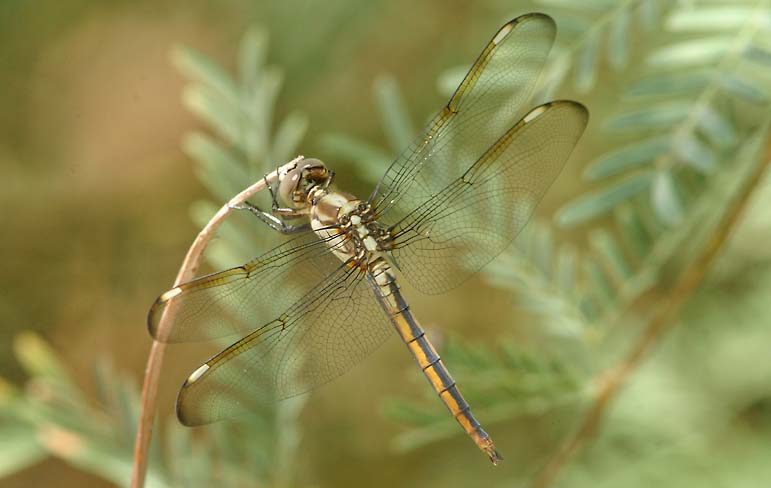
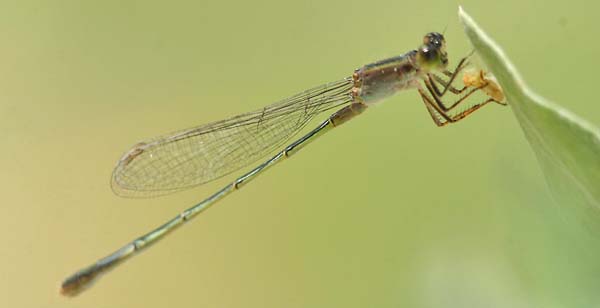



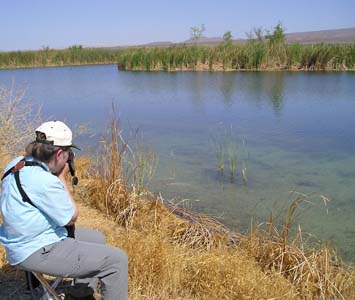




 We were pleased to see both saddlebags in
fair numbers. They are usually seen only in flight, so it was a lucky
break to see this nice male Red Saddlebags (right)
perched up on a tiny spike. Our complete list of odes:
We were pleased to see both saddlebags in
fair numbers. They are usually seen only in flight, so it was a lucky
break to see this nice male Red Saddlebags (right)
perched up on a tiny spike. Our complete list of odes:

